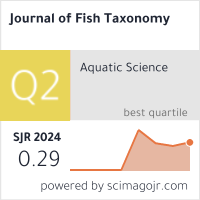Decoding Diversity in Freshwater Fishes of India: A Deep Fading Approach to Geographical Isolation and Speciation
Keywords:
Geographical isolation, freshwater fishes, diversification, speciation, deep learning, Deep Fading augmentation, trait drift, morphological integration, genetic markers, image-based taxonomy, COI barcodes, cryptic diversity, phylogeography, Indian river basins, integrative taxonomy, conservation prioritization, biodiversity assessment.Abstract
Geographical isolation has long been recognized as one of the primary forces driving diversification and speciation in freshwater fishes. The fragmented nature of river systems, coupled with historical geological and climatic changes, creates ideal conditions for population isolation, lineage divergence, and the emergence of cryptic diversity. Traditional taxonomy and phylogeography rely on morphological characters and molecular markers, but these approaches are often time-consuming, limited in resolution, and unable to capture the subtle, gradual changes that occur in the early stages of speciation. To address this gap, we propose a hybrid computational framework that integrates morphological, genetic, spatial, and image-based data through deep learning. At the core of this framework is a novel Deep Fading augmentation strategy, designed to model the process of trait drift under isolation. Deep Fading operates in latent space by progressively attenuating specific deep-feature dimensions, thereby simulating the gradual divergence that naturally occurs across geographically separated populations. This augmentation enhances the model’s sensitivity to minor yet biologically meaningful differences, making it possible to detect incipient lineages and cryptic taxa that might otherwise go unrecognized.
In this research illustrate this approach using Indian freshwater fishes, a group known for their exceptional diversity and high levels of endemism across distinct river basins. A multi-modal dataset combining specimen images, morph metric data, COI barcode sequences, and locality metadata forms the basis of a proof-of-concept evaluation. Preliminary results indicate that embeddings generated by the Deep Fading–augmented network not only increase cluster separation of geographically isolated populations but also show stronger concordance with molecular phylogeographic patterns when compared to baseline models. This study highlights the potential of Deep Fading as a powerful computational tool for integrative taxonomy, conservation prioritization, and the development of automated pipelines that can accelerate biodiversity assessment and management in freshwater ecosystems.








